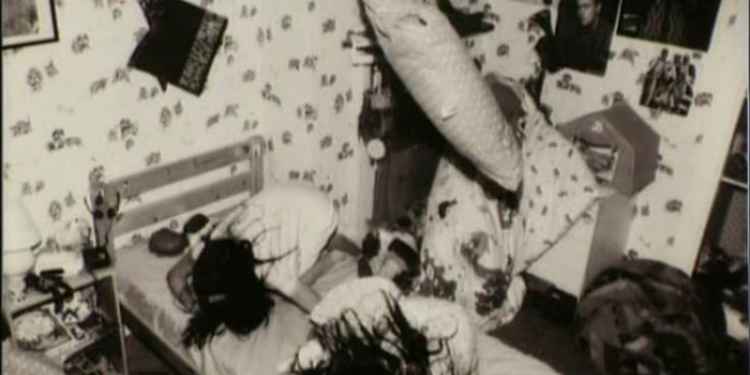
Photo: ha11ok

Photo: ha11ok
Slate writing is a method historically used by spiritualists and mediums to communicate with spirits. This practice became particularly popular during the late 19th and early 20th centuries, a period often referred to as the heyday of spiritualism. The process involves a small chalkboard or slate, typically accompanied by a piece of chalk. The medium would claim that spirits could use these tools to write messages.
During a slate writing session, the medium would often hold the slate under a table or in a box to prevent the participants from seeing the writing process. Sometimes, two slates would be tied together with a piece of chalk placed between them. The medium would then call upon the spirits, asking them to communicate by writing messages on the slates. After a period of time, the slates would be separated to reveal words, sentences, or even drawings purportedly created by the spirits.
It was believed that the spirits of the deceased could manipulate the chalk to leave messages for the living. This method was often used to provide comfort to the bereaved by offering them a tangible connection to their departed loved ones. It also served as a tool for mediums to demonstrate their supposed ability to communicate with the spirit world, often in a theatrical manner that captivated audiences.
Slate writing could be considered a form of automatic writing, or psychography, which is when an individual writes without conscious intent and is often believed to be under the influence of spiritual or supernatural forces.
In both slate writing and traditional automatic writing, the core idea is that the messages originate from an external, often spiritual, source rather than the conscious mind of the person involved. With slate writing, the medium provides the tools and creates an environment conducive to spiritual communication. The spirits are then believed to use these tools to convey their messages.
Just as automatic writing involves the medium's hand seemingly moving on its own to write messages, slate writing involves the chalk moving under the influence of spirits to create words or drawings. Both practices share the underlying belief that spirits can and do communicate with the living.
However, many dispute the validity of slate writing altogether, arguing that it is open to manipulation by trickery. Skeptics often point out that holding the slates out of sight provides ample opportunity for the medium to write the messages themselves. Famous magicians like Harry Houdini exposed many slate writing mediums as frauds, demonstrating how simple sleight-of-hand techniques could produce the same results.
One well-known method of trickery involves using two slates, each within a wooden frame. One of these slates has a hidden feature: a false plate in front of another. The medium starts with two slates that appear to be empty. However, one of the slates has a hidden, pre-written message on the additional plate hidden behind the false plate. When the two slates are placed together and then shaken or moved, the false plate falls out of its frame and fits neatly into the frame of the other slate. This action reveals the pre-written message on the plate where the false plate originally was.
To the audience, it seems as though the spirits have written a message on the slates while they were out of sight. The truth, however, is that the message was already there, cleverly hidden until the slates were manipulated to reveal it. This trick showcases the ingenuity and dexterity that some mediums employ to convince their audience of their paranormal abilities.
While some still believe slate writing offers genuine communication with spirits, others see these practices as skilful deceptions designed to exploit the emotions and beliefs of participants. Either way, it has become an iconic part of the history of the spiritualism movement.
More Essential Parapsychology
See All
ArrayOctober 11, 2024
The Reality Behind Kirlian Photography’s Glowing Auras

ArrayOctober 07, 2024
Could Retroactive Psychokinesis Allow Us To Influence The Past?

ArrayOctober 05, 2024
What Spontaneous Cases Are & Why Parapsychologists Research Them
Learn With Higgypop
Hosted by Paralearning in association with Higgypop, these courses on ghost hunting, paranormal investigations, and occult practices draw on the experience of our team of paranormal writers.

Diploma In Practical Ghost Hunting & Scientific Analysis
This course gives you practical and useful knowledge of ghost hunting and paranormal research, which is invaluable when conducting your own paranormal investigations or as part of a group event.
View Course
Diploma In Advanced Scientific Theory For Paranormal Investigators
This course gives you practical and useful knowledge of ghost hunting and paranormal research, which is invaluable when conducting your own paranormal investigations or as part of a group event.
View CourseMore Like This

BooksMarch 17, 2025
Revisiting 'Mind To Mind': René Warcollier's 1948 Book On Telepathy

Remote ViewingMarch 16, 2025
Remote Viewing Glossary: Key Terms & Definitions

Womens DayMarch 08, 2025
Influential Female Psychics & Mediums

Remote ViewingMarch 07, 2025
Examining The Best Evidence For The Existence Of Remote Viewing
 See More on Audible
See More on Audible

Comments
Want To Join The Conversation?
Sign in or create an account to leave a comment.
Sign In
Create Account
Account Settings
Be the first to comment.